Animation. Experiment. Belarus
Experiment and animation. It is perfect for those who love creativity without limitations or when it is difficult and easy at the same time. In this article, you can find the most important facts about the animation experiment in general and about the Belarusian one in particular. Yes, there have been experiments in Belarusian animation, and, most importantly, new works continue to appear. We offer you to delve into the past and present of experimental animation.
Two approaches
Let's skip the introduction and go straight to the mechanics. In the early days of animation, experimenters had two main approaches. Let's call them as follows:
a) Rational approach, from theory to practice.
How it worked: the text of a statement was prepared, in which a search for a new visual-narrative language was announced. It was followed by experimenting with new motion-picture techniques. In the end, the statement was confirmed (or not).
b) Real-life approach, from practice to production.
How it worked: solutions that could surprise and sell what was created were searched for. For example, the technique of combining a living person and an “animated” toy in a single frame became the basis of the special effects film industry.
Both of these approaches worked as well a hundred years ago as they do today. However, the path from pure experimentation to commercial success takes much longer. Let's take colors for example. They were first used by Walter Ruttmann in his experimental abstract animation Opus I (1921). The first narrative works with frame-by-frame painting appeared in the 1960s and were created by the Pole Witold Giersz and the Canadian Caroline Leaf. Later, the method was developed by Alyaksandr Pyatrou. One of his stunning works, The Old Man and the Sea (2000), won an Oscar. And in 2017, the world fell in love with the first full-length painted (in the truest sense of the word) film Van Gogh. With love, Vincent. A huge team from Poland and the UK worked on this commercial experiment. The risk paid off and allowed the launch of a new large-scale project.
The first "rational" experiments
In the 1910s, Italian, German and French groups of artists decided to explore the film potential. The task was to convey emotions and music. How? With the help of rhythm, light, color and arrangement of various figures. The film was burned, scratched, painted... Not mindlessly, but on a scientific basis - the theory of music, geometry, optics, etc. The experimental authors wanted to create a new language and a perfect animation. As to emotions, the result was not too good, but as to music, it was a 100% success. Based on these experiments, all music visualizers and disco colour effects work. In short: these avant-garde developments in sound and color formed the basis of all animation art.
Works worth seeing
- Walter Ruttmann, Opus I (1921)
- Mikalay Voinau, Prelude by Rachmaninoff (1931)
- Len Lye, Rainbow Dance (1936)
- Oskar Fischinger, Optical Poem (1938)
- Norman McLaren, Dots (1940)
First practical experiments
The proponents of the second approach were very handy, thought outside the box and, most importantly, knew how to monetize their inventions. A perfect example is, of course, Walt Disney, but the first here was Uladzislau Starevich. He grew up in Vilnius at the beginning of the last century. By the way, Starevich was very fond of Belarusian culture, and given the historical multiculturalism of the city, it would not be surprising if his ancestry included Belarusians. Starevich was actually working at the ethnographic museum in Kaunas, when he became a cinema fan and rented a camera. Legend has it that, after a couple of documentary sketches, he decided to film stag beetles fighting over a female. The shooting failed, because the bugs did not want to move in the bright light. Others would have given up, but Starevich made puppet copies and, in 1910, brought the beetles to life with the help of rubber, wire, and fishing line. His "actors" wore swords and hats, fell in love and fought duels. The trial film caused a sensation and was followed by an invitation to work in Moscow at the then largest studio of Alyaksandr Khanzhonkau. And for many years, the general audience believed that Starevich was skillfully training live insects.
The search for original solutions proved that everything can be brought to life: any objects, any bulk materials. Moreover, people can be animated. Norman McLaren was the first to do this. The film Neighbors won numerous awards, including an Oscar. The most complex type - the animation of powder mixtures of sand, stone and dust - was discovered last. The pioneers were the Swiss Ernest Ansorge and the Canadian Caroline Leaf; and the Belarusian animation directors Alena and Uladzimir Pyatkevich are considered among the best in the world. They created fairy tales and dreams, unique in style and content, filled with philosophical meaning and magic.
Lafertauskaya Makaunitsa is Alena Marchanka's (Pyatkevich’s (married name) graduation project and the first Belarusian sand animation film. In Makaunitsa, a girl learns to distinguish between good and evil and chooses to follow her grandmother's commandments rather than to be led by her stepmother. For Alena, this was not the first experience of working with sand. Before presenting her graduation project, she helped her future husband animate Kazka pra Kuzurachku (A Small Tale of a Small Bug). It’s a lyrical and philosophical story of the life of a short-lived bug. Moving the sand millimeter by millimeter, Alena and Uladzimir created about a dozen stories from the sand. These unique films with a cozy atmosphere are the treasures of the Belarusian and world animation.
Works worth seeing
- Uladzislau Starevich, The Beautiful Leukanida (1912)
- Lotte Reiniger, Das Ornament des verliebten Herzens (1919)
- Norman McLaren, Neighbors (1952)
- Ernest Ansorge, Les Corbeaux (1967)
- Caroline Leaf, The Owl Who Married a Goose (1974)
- Uladzimir Pyatkevich, Kazka pra Kuzurachku (A Small Tale of a Small Bug) (1985)
- Alena Marchanka (Pyatkevich), Lafertauskaya Makaunitsa (1986)
History of the Belarusian animation experiment
It all started in the 20s of the last century. The Belarusian studio was located in Leningrad, which at that time was the center of advanced animation ideas in the Soviet era. Most often, the studio made animated inserts in the chronicle, popular science and feature films, as well as political propaganda ads. Unfortunately, only the names of the films have survived: October and the Bourgeois World (1927), Rebellion of Teeth (1928) and others. You can understand the style of filming of that time by watching the animation Soviet Toys by Dziga Vertau. By the way, there is information that the Belarusian studio provided the premises for the filming of this animation.
After World War II, the Belarusian studio changed its name and finally moved to Minsk. A new epoch of the Belarusian animation started in 1971. At that time, the directors Uladzimir Golikau and Marta Lubyannikava came to Minsk to Belarusfilm to shoot one episode of the puppet series about Nyaznaika and stayed to work there. In 1973, an animation department was opened at Belarusfilm, which in 1976 became a workshop, and in 1987 it became a special studio for animated films.
By the 70s of the last century, animation had lost its maturity. It was thought to be for children. This situation significantly limited the experimental space, but the Belarusian animators did not give up. They experimented with materials and techniques as much as possible. Straw in Dudka-Vesyalushka (A Merry Pipe) (1978), wood and flax in Tsikhaye Balota (A Quiet Swamp) (1979), the original combination of paper string puppets with colors in Pustelnik i Ruzha (A Hermit and a Rose) (1980). The most experimental work of the early period is Papyarovaya Kazka (A Paper Fairy Tale). Imagine: a happy two-dimensional paper world is attacked by real scissors. Panic starts. Suddenly, the boundaries of the real and the fictional are "destroyed" - a child approaches the animation stand, on which the action takes place, and, from their dimension, helps both the paper characters and the scissors. This twist is worthy of applause.
In fact, the Belarusian animation is very prone to experimentation. This is clearly seen in the animation of the late 1980s and the early 1990s. Most of the films of this period are works on serious, philosophical topics that are intended exclusively for an adult audience and involve sophisticated technical solutions. The main thing in these films, as in the first avant-garde experiments, is not the plot, but the conveyance of feelings through an unusual image. The solutions found are impressive and 100% effective.
Was anything really special created? For example, in Snenni Poznyay Vosennyu (Late Autumn Dreams), real objects are combined with paper characters and puppets. In the story, memories-news come to a lonely old man. The old man's world is three-dimensional, and his memories are embodied in two-dimensional paper. Nie Zabi. Shostaya Zapavedz Maiseya (You shall not Murder. The Sixth Commandment of Moses) virtually erases the boundary between the drawings and the acting scenes. It looks like the video was further processed by filters in the video editor. But no, it's all made by hand using film only.
The collection of short stories Labirynt-1 (Labyrinth-1) is imbued with the spirit of change. When viewing, one can only be amazed and exclaim: "It turns out that it was possible!" A couple of examples for understanding: in the story Kapets Kanichnaga Vershnika (The End of Cone Rider), a knight rides towards the orange square-shaped sun; in the picturesque Icaryada, a crow dreams of cows flying into the sky; in Kryly (The Wings), a man sells wings to people in order to get a gun and organize a hunt... After that, it is no longer possible to say that Belarusian animators make only fairy tales for children.
The story would be incomplete without mentioning the hallmark of the 2000s — lacelike paper cutouts by Mikhail Tumelya. He was the first to create and animate lacelike characters. It turned out that this style can equally powerfully tell both funny and sad stories. Belaruskiya Prymauki (Belarusian proverbs) will make you laugh a lot, and the song Yak Sluzhyu Zha Ya U Pana (How I served the Landowner) will make you cry. There is no point in describing the plot: you have to see it. Just like all the other films.
Works worth seeing
- Uladzimir Puzanau, Papyarovaya Kazka (A Paper Fairy Tale) (1976)
- Tatsiana Zhytkouskaya, Snenni Poznyay Vosennyu (Late Autumn Dreams) (1988)
- Alyaksandr Lenkin, Nie Zabi. Shostaya Zapavedz Maiseya (You shall not Murder. The Sixth Commandment of Moses) (1990)
- Omnibus film Labirynt-1 (Labyrinth-1) (1990):
- Mukha (A Fly) (directed by Igar Volchak), Aposhni Krok (The Last Step) and Kryly (The Wings) (directed by Alyaksandr Lenkin), Icaryada (directed by Natallya Kastyuchenka), Kapets Kanichnaga Vershnika (The End of Cone Rider) (directed by Mikhail Berenshteyn), Paudzyonny Strelachnik (by Rastsislau Kresikau)
- Belaruskiya Prymauki (Belarusian proverbs) (directed by Mikhail Tumelya, 2008)
Contemporary experimental animation
It is usually said that everything changed with the advent of computers. But the real change began a little earlier, when the two main approaches had exhausted themselves. They were limited to the skills of one person or a small group of like-minded people. A new approach arose along with the performing culture, when the philosophy of the game came and the dialogue between the author and the audience became important. It became possible to create such a dialogue in an animated film by resorting to psychology, symbols and allusions, creating ambiguity and multi-layering in the plot and image.
Computers gave a huge new field for experimentation: 2D, 2.5D, 3D, motion capture plus 360-degree spherical animation. Add holograms and the neural network training results. There is room for development. Today, production studios are experimenting with almost every project in order to attract the attention of viewers and sponsors. For example, the sensational Klaus, in which 3D models were processed so that they looked like they were painted. And in the film Van Gogh. With love, Vincent, on the contrary, each frame is drawn by hand. I had better not start speaking about Love, Death & Robots, because I can do it for ages.
What is happening in Belarusian experimental animation now?
There are two areas where our animators use their experimental skills: flat screen 2D and 3D animation, and fulldome or spherical animation. We can be proud that, among all the fulldome films in the world, our animators made the first puppet film. The film is called Myshanyaty i Mesyats (Young Mice and the Moon). The authors are graduates of the Belarusian Academy of Arts. The fairy tale was invented for young children who first came to the planetarium. In the story, two young mice think that someone is biting off pieces of the Moon and are worried that it will disappear, but astronomer robots educate the young mice. The film is included in the permanent repertoire of the Minsk Planetarium.
Today, the Belarusian animation experiment is promoted by independent animation. People make films on their own, with their own money, in their free time. The brightest and finest works will be mentioned below.
Let's start with Tsarstva Zorak (The Kingdom of Stars). The animation director Ivan Gapienka offers an emotional story without words. The viewer himself has to answer why the boy opposes the king or where the magical power of the child comes from. The prerequisite is to experience a lot of emotions. Rich, vibrant colors and lighting solutions actively work to evoke them. And this is no coincidence - it was intended that way.
Those who know the auteur animation Kali Ya Byu General (When I was a General) may add points to their karma. The creator of the film, Yury Syamashka, skillfully balances on the border between an amateur and a professional. The sharp script and the perfectly constructed scenes, combined with the angular puppets and the cardboard sets, create a new, easily recognizable style that can be called handmade animation. Yury's early works are also made in this style, and, if you compare them with Kali Ya Byu General (When I was a General), you can see how the animator is pumping up his unique skills.
The cherry on top of the cake is the work of Genadz Buto. This author is not looking for easy ways. Working in an animation studio, he is actively interested in contemporary art and brings ideas to life. His latest work Zanadta Vyaliki Malyunak (A Too Big Drawing) won a number of festival awards. If you want to see the most experimental experiments, you should also watch his other works, starting with The Panorama, which plays a lot with space and time.
Works worth seeing
- Anastasiya Dyro, Andrey Shokhan, Myshanyaty i Mesyats (Young Mice and the Moon) (2017)
- Ivan Gapienka, Tsarstva Zorak (The Kingdom of Stars) (2021)
- Genadz Buto, Panorama (2011), Zanadta Vyaliki Malyunak (A Too Big Drawing) (2021)
- Yury Syamashka, Ultrakarotkiya Gistoryi (Ultra-Short Stories) (2018-2020), Kali Ya Byu General (When I was a General) (2019)
The essence of an animation experiment is to indicate a trend and give the viewer food for the eyes and mind. No ready-made solutions are handed on a platter. There is no secret ingredient in experimental animation. It's just that it is always a source of something new, even if many years have passed since the creation of an experiment. A good experiment is never out of date and can inspire with new ideas. So watch, interpret, enjoy and be inspired!








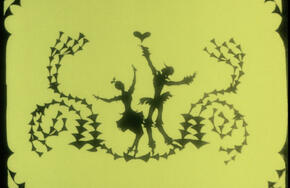

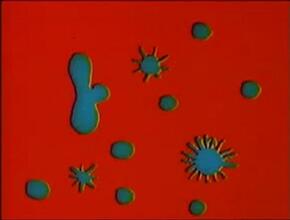

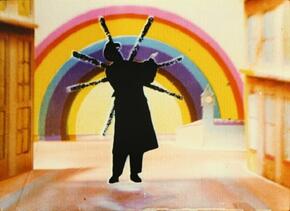

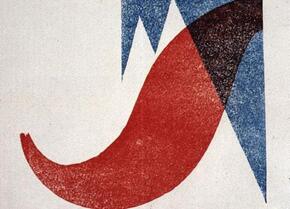
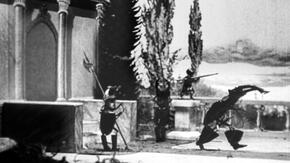

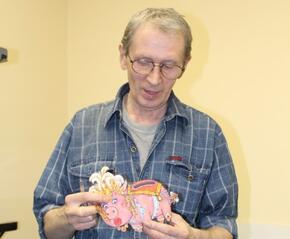

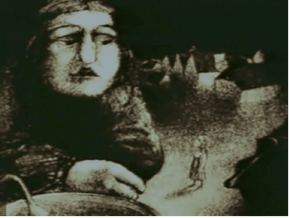


.jpg)